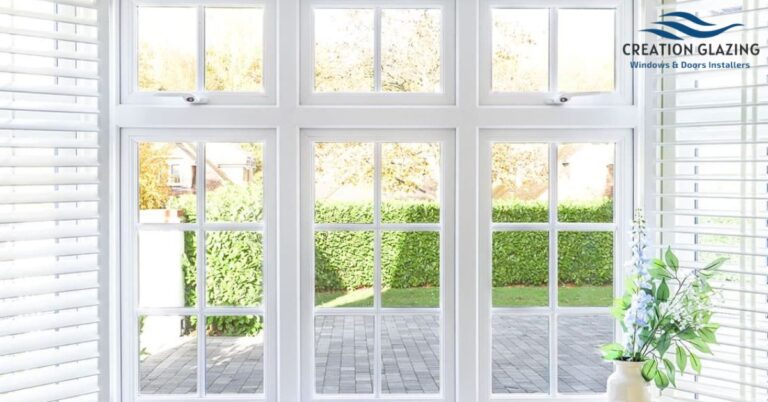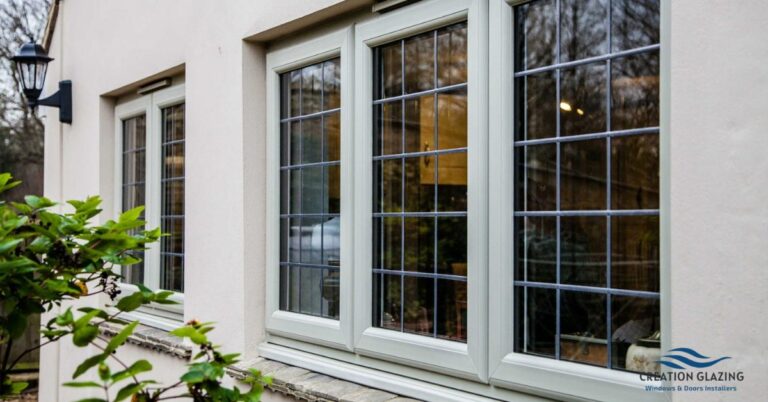One of the most popular and easy to operate window styles is a casement window. It’s known for its energy efficiency and sleek design. This guide will cover everything you need to know about casement windows: types, costs, benefits, and even potential drawbacks. Whether you’re interested in uPVC casement windows, timber casement windows, or French casement windows, we’ve got you covered.
What is a Casement Window: Casement Window Definition
A casement window is attached to its frame with one or multiple hinges, functioning similar to a door. They open outward resulting in excellent ventilation and uninterrupted views. Unlike sliding windows, they offer energy efficiency and insulation due to the tight seal they create when closed.
Casement windows have a rich history and have been in use for several centuries. More modern materials have been incorporated into their making such as uPVC casement windows, timber casement windows, and aluminum, which has greatly enhanced their durability and efficiency.
Types of Casement Windows
There are, in fact, several casement window types, all designed to meet different aesthetic and functional needs. Knowing these variations help homeowners make better decisions depending on energy efficiency, ventilation needs, and design preferences.
Side-Hung Casement Windows
These are the most common casement windows UK homeowners choose. These windows permit full opening because of their side hinges, which means that they can be opened outward. Because of this, these have great ventilation and can be cleaned with ease. Because of its design, the window opening is maximized at its fullest and is ideal for the room that needs airflow.
Single Casement Window
A single casement window comprises a single sash that opens outward. These windows are great for small spaces. They are ideal for smaller bathrooms, kitchens, and even bedrooms as they can easily ventilate the small area and lack space to store things.
Double Casement Windows (French Casement)
This type of French windows consist of two sashes that do not have any center bar so they can open outward. The absence of this center bar allows an unobstructed view and increased ventilation. This makes the window design common in homes of different types, be it modern or traditional. As there is no center mullion, the connection to the outdoors is seamless which is why most view these to be ideal for living rooms and patios.
Top Hung Casement Window
More commonly called an awning window, a top hung casement window is opened by being hinged at the top. Because of its design, this type of window allows air to ventilate while also preventing rain from coming inside, which makes it suitable to be used in wet regions. Most frequently, they are placed above other fixed windows, giving airflow and ventilation simultaneously while barring any security or weather resistant compromises.
Bottom Hung Casement (Hinged Casement Windows)
Unlike the top hung windows, hopper windows are hinged at the bottom which allows them to open inward. These windows are very common in bathrooms, basements and utility rooms because they can let air in without compromising security. Their inward opening system also makes these windows easy to clean from inside the room.
Flush Casement Windows
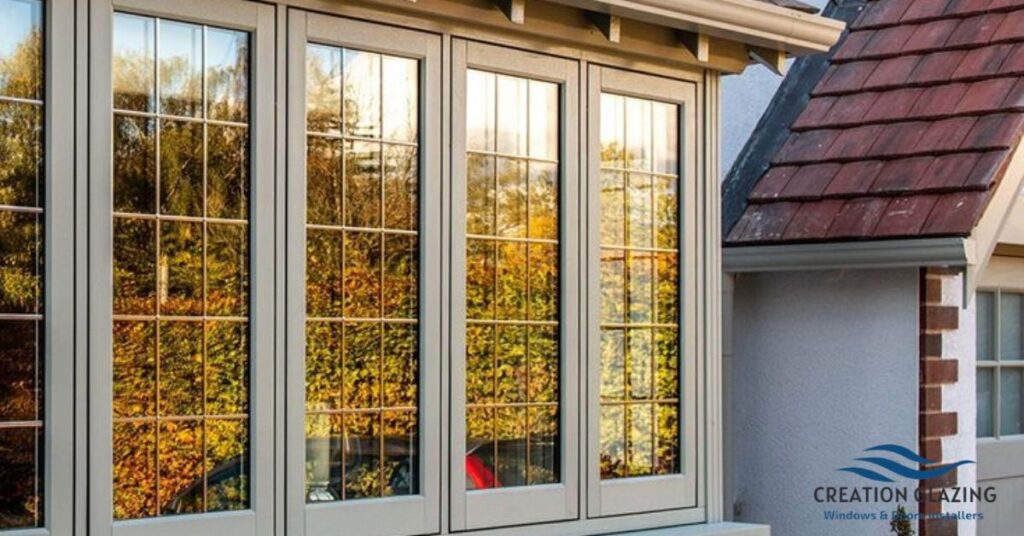
These window casement types is it in the frame, not protruding from it. Their edges even out with the frame leading to a more modern and sleek look. Though there are some disadvantages of flush casement windows like not enough ventilation, higher costs, and others, there are some people who lean towards this particular style because of the minimalist approach and their great weather proofing.
Fixed Casement Windows
While they are classified as windows, fixed windows casement windows cannot be opened. However, they have the ability to provide insulation and may allow the entry of natural light into an area within a home. Because they provide aesthetic beauty without the need for ventilation, picture windows located in living rooms, and large stairwell windows would greatly benefit from fixed casement windows.
Knowing how these types of windows work will help any homeowner select the best fit for their sense of fashion and budget. There are several casement window types that serve both aesthetic and style purposes.
What are Casement Picture Windows?
As their name suggests, a casement picture window is a fixed casement window that is large in size and built to capture aesthetic beauty while letting the most light possible into a room. Unlike other casement windows, these do not permit the opening of the window.
Instead, they offer a stunning view of the outdoors. Generally, they are used in combination with operable casement upvc windows or timber jump windows to gain both ventilation and style.
Benefits of Casement Picture Windows
Increased natural illumination Available glass surface area is maximized with large panes fixed in position, allowing for more daylight to penetrate the area. Clear views The absence of sashes and mullions guarantees panoramic outlook without obstruction.
Economical Airtight seals make it energy efficient by eliminating drafts. Less upkeep Fixed casement picture windows have no mechanical parts which increases reliability and simplifies the cleaning process.
- Design Flexibility – It can adapt for use in both modern and classical architecture.
- Best Fit Locations for Casement Picture Windows
- Living Rooms: Atmosphere is inviting with outdoor views being scenic.
- Dining Areas: Feel extra spacious while bringing in elegance and light.
- Bedrooms: Energy efficiency is maintained with a tranquil view.
- Hallways and Staircases: Illumination is enhanced in dull areas.
- Office Spaces: Daylight and boost productivity with outdoor views.
Important Points to Note When Looking To Install Casement Picture Windows
In comparison to other window types, casement picture windows require more attention since they are so attractive and energy efficient.
- Lack of ventilation: For proper airflow some operable casement windows should be used in combination.
- Installation cost: Unlike standard windows, casement picture windows are custom sized which increases their cost.
- Potential for glare: Blinds or window tinting may be necessary due to excessive exposure from large panes of glass.
Other Window Styles That Pair With Casement Picture Windows
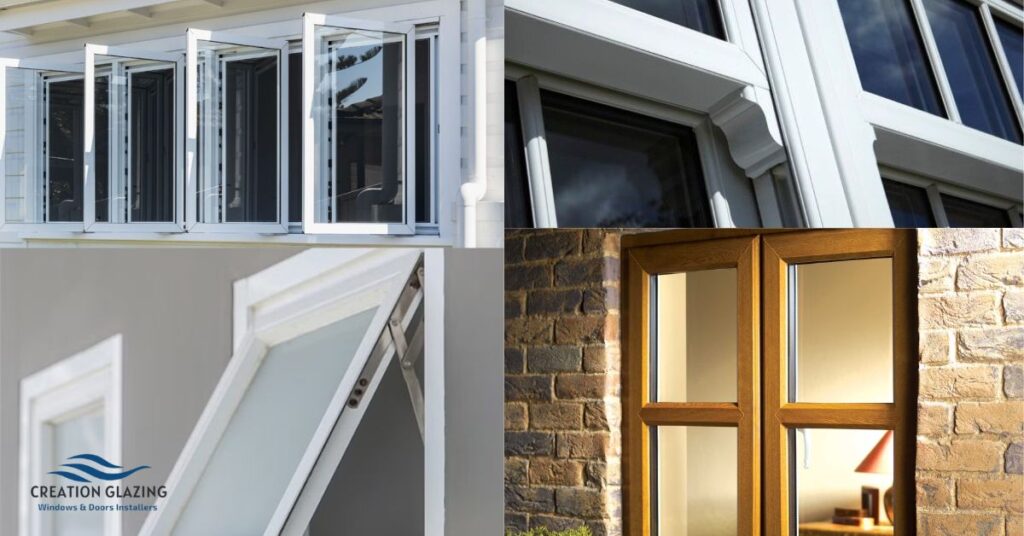
Double casement windows: Provide ventilation with the fixed window.
Top hung casement window: Rain stays out while allowing airflow that balances function and design.
French casement windows: Additional traditional looks with enhanced open feel.
Casement window sash: A fantastic option for classic style homes.
Picture casement windows are ideal for clients who wish to include natural lighting, captivating views and energy savings in their home. If designed properly, in combination with other casement window types, any room can be turned into a highly perfumed, welcoming space.
Comprehending Components of a Casement Window: A Guide
To make an informed decision about casement window styles, it’s essential to understand their parts.
| Component | Description |
| Frame | The outer structure that supports the window. |
| Sash | The movable part of the window that holds the glass. |
| Hinges | Allow the window to open outward. |
| Handle/Crank | Used to open and close the window. |
| Locking System | Enhances security with multi-point locking mechanisms. |
| Weatherstripping | Prevents drafts and increases insulation. |
Casement Windows versus Other Types of Windows: The Bad and The Good
Benefits of casement windows
Superb ventilation: The vent’s full opening provides minimum resistance to air flow.
Economy: The seal is well fitted thus prevents heat from escaping.
Increase in security: Adding several locking points increases safety.
Clear views: Absence of center pane’s divider provides unblocked view of scenery.
Disadvantages of casement windows
Higher prices In comparison with sliding or sash casement window.
Possible mechanical problems External hinges and cranks may become damaged with time.
Wind resistance The hinges may become strained due to strong winds.
How Much Do Casement Windows Cost: Are Casement Windows More Expensive?
The cost for choosing a casement window differs with the material used, size, the lensing type, and the mounting method. Below is a comparison of the casement windows prices sorted by materials.
Factors Affecting Casement Window Cost:
- Material:
- uPVC: Affordable and low maintenance
- Aluminum: Sleek, modern, and durable but more expensive
- Wood: Classic appearance but requires upkeep and costs more
- uPVC: Affordable and low maintenance
- Glass Type:
- Single-glazed: Least expensive but less energy efficient
- Double or triple-glazed: Higher upfront cost but better insulation
- Single-glazed: Least expensive but less energy efficient
- Size & Customization:
- Larger windows cost more
- Custom colors, grid patterns, and decorative glass add to the price
- Larger windows cost more
- Hardware & Installation:
- Quality locks and hinges affect pricing
- Professional installation ensures longevity but increases costs
- Quality locks and hinges affect pricing
Are Casement Windows More Expensive?
Yes, Casement Windows are often pricier than sliding or fixed windows due to their mechanical components and sealing technology. However, their energy efficiency and durability help offset the initial cost by reducing long-term energy bills. Choosing the right material and customization options can help balance cost and benefits for your home.
Choosing the Right Casement Window for Your Home
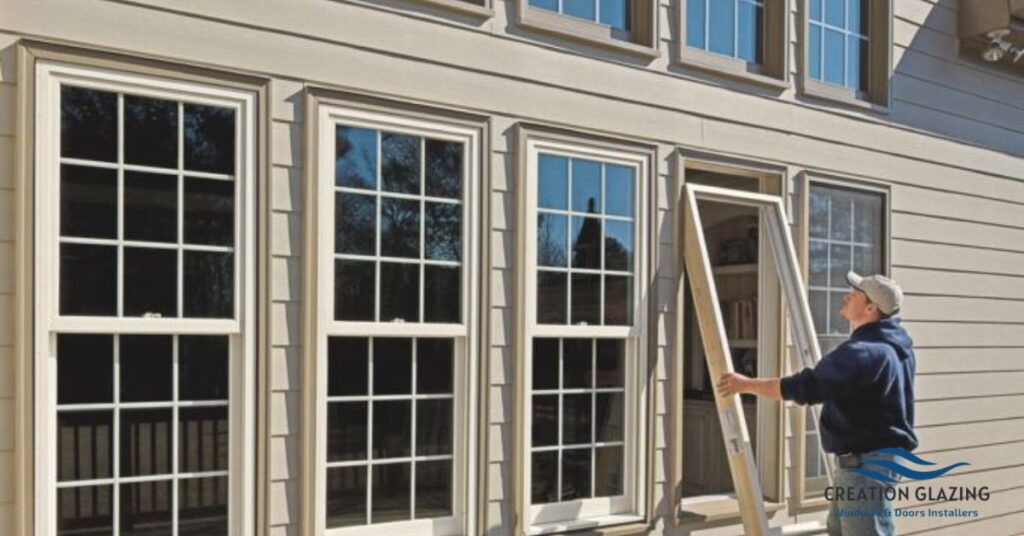
To choose the best casement window for your home, you need to think about its style, material, energy rating, as well as customization options. The window style needs to match your home’s design. It can be either modern or traditional. Different materials have different pros like uPVC which is extremely durable, timber for aesthetics or aluminum which gives the best of both. Energy efficiency is vital, and casement window double glazing helps in insulation and saves a lot of energy.
Personal taste customization varies in colors, grid patterns, and types of decorative glass homeowners want and can be fitted to the windows. Furthermore, the installation quality and window maintenance needs should be looked into to allow ease in performance and comfort in the long run. A casement window is the ultimate winner for curb appeal and functionality.
Conclusion: What Are Casement Windows
A casement window both suits your style and meets your practical needs. casement means It has hinges that open outward, providing great ventilation and a clear view. A home’s casement window varies by its design, material, and energy efficiency. uPVC, aluminum, and timber are popular options due to the durability and aesthetic appeal they offer.
Having double-glazed windows enhances insulation, thus reducing utility costs. Other customization features such as colors, grid patterns, and decorative glass are also available. Minimal maintenance makes these windows look great, while proper installation optimizes performance and increases longevity. When a casement window is well selected, it increases a home’s natural light and ventilation while also improving the home’s appeal.

